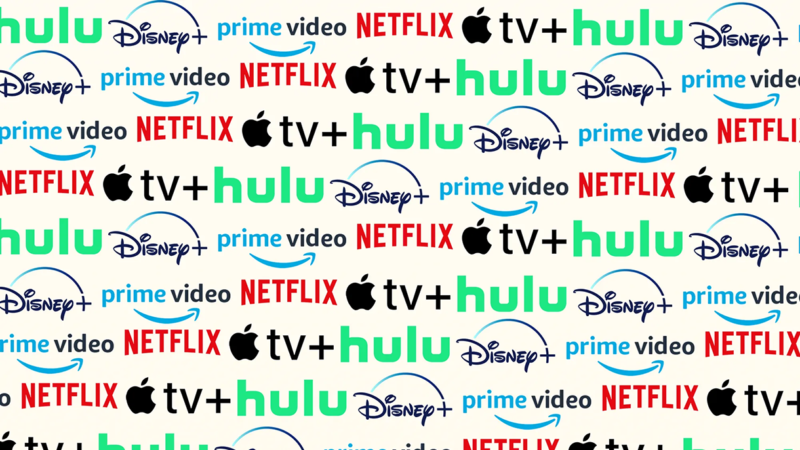
Over the past decade, streaming services have completely transformed the entertainment industry. From Netflix to Disney+, these platforms have reshaped how we consume movies, TV shows, music, and even live events. The rapid rise of streaming services has disrupted traditional cable, changed consumer habits, and forced content creators and distributors to rethink their business models. As we move into the next phase of streaming, the question remains: what’s next for the entertainment landscape? In this article, we’ll explore the evolution of streaming services and the trends that will shape the future of entertainment.
1. The Rise of Streaming Services
Streaming services have revolutionized how people consume content. What started as a niche offering has now become the primary way millions of people access entertainment. The convenience, flexibility, and variety that streaming platforms offer have made them the go-to choice for modern audiences.
- The Early Days: The rise of streaming services can be traced back to the mid-2000s when Netflix shifted from a DVD rental model to an online streaming platform. This move laid the foundation for the streaming boom, providing an alternative to traditional TV and cinema.
- Subscription-Based Models: Subscription models, like those pioneered by Netflix, Hulu, and Amazon Prime Video, allowed users to access an entire library of content for a monthly fee. This model quickly gained popularity, leading to the growth of other major players like Disney+, HBO Max, and Apple TV+.
- Disrupting Traditional Cable: Streaming services have disrupted the cable industry by offering on-demand content that can be accessed anytime, anywhere. As a result, traditional cable companies have experienced significant subscriber losses as consumers “cut the cord.”
Streaming services have created a paradigm shift in entertainment, giving viewers more control over what they watch, when they watch it, and how they consume content.
2. The Impact of Original Content
One of the biggest drivers of growth for streaming platforms has been the production of original content. Netflix’s decision to produce original series like House of Cards and Orange is the New Black marked the beginning of a new era in content creation, with streaming services becoming key players in the production landscape.
- Content Wars: In the competitive world of streaming, content is king. Platforms like Netflix, Amazon Prime, and Disney+ have invested billions of dollars in original programming to attract and retain subscribers. This has led to the so-called “streaming wars,” where each service competes to produce the next big hit.
- Exclusive Licensing: In addition to producing original content, streaming platforms have secured exclusive rights to popular shows and movies. For instance, Disney+ became the exclusive home for the Star Wars and Marvel franchises, while HBO Max secured rights to Friends and *Game of Thrones.*
- Global Reach: Streaming platforms have also expanded their reach globally, producing content in different languages and catering to international audiences. Shows like Money Heist (Spanish) and Squid Game (Korean) have proven that global hits can emerge from non-English-speaking markets.
The emphasis on original content has allowed streaming platforms to distinguish themselves from traditional media and build dedicated fan bases, while also driving innovation in storytelling and production.
3. The Future of Streaming: Emerging Trends
As streaming services continue to evolve, new trends are emerging that will shape the future of entertainment. Here are some of the most exciting developments to watch:
- Interactive and Immersive Experiences: The future of streaming will likely include more interactive and immersive experiences. For instance, Netflix’s interactive film Black Mirror: Bandersnatch allowed viewers to choose their own adventure, giving them control over the storyline. This type of content offers a new level of engagement, and we can expect more interactive shows and movies in the coming years.
- Virtual Reality (VR) and Augmented Reality (AR): VR and AR technology are set to revolutionize how we consume entertainment. Streaming platforms are exploring ways to incorporate these technologies into their offerings. Imagine watching a live concert in VR from the comfort of your home or exploring an AR-enhanced version of your favorite TV show. These immersive experiences could be the next frontier in streaming entertainment.
- Personalized Content Curation: As streaming platforms collect more data on user preferences and viewing habits, they will continue to refine their algorithms to offer hyper-personalized recommendations. Advanced AI and machine learning technologies will play a key role in predicting what users want to watch next, creating a more tailored and individualized experience.
- Live Streaming and Events: Live streaming is becoming an increasingly important part of the entertainment ecosystem. From sports and concerts to award shows and exclusive events, live streaming allows audiences to experience events in real-time. Services like YouTube Live, Twitch, and Facebook Live have already made significant strides in this space, and traditional streaming platforms are beginning to incorporate live elements into their offerings.
These trends indicate that the future of streaming will be more interactive, immersive, and personalized than ever before, offering new ways for audiences to engage with content.
4. The Challenge of Content Fragmentation
While streaming services have brought about a revolution in content consumption, they’ve also introduced new challenges, particularly content fragmentation. With the rise of multiple streaming platforms, consumers now face the challenge of choosing between an overwhelming number of services.
- Too Many Subscriptions: With so many platforms available, from Netflix and Amazon Prime Video to Disney+ and HBO Max, consumers are increasingly finding it difficult to subscribe to all the services they want. This has led to subscription fatigue, where viewers struggle to manage multiple services.
- Exclusive Content: Each platform is heavily investing in exclusive content to differentiate itself, which means that viewers may need to subscribe to several platforms just to watch all their favorite shows. For example, fans of The Mandalorian need Disney+, while Stranger Things can only be found on Netflix.
- The Return of Bundling: As more streaming platforms enter the market, the return of bundling may become inevitable. Some providers, like Apple and Amazon, are already experimenting with bundling multiple services into one subscription. In the future, we may see a shift toward platforms offering bundled content from various services to simplify the user experience.
Content fragmentation poses a significant challenge for consumers and the industry alike, but it also opens the door for innovative solutions to manage multiple subscriptions and streamline the viewing experience.
5. The Role of Advertisements in Streaming
Another evolving aspect of streaming is the role of advertisements. Traditionally, streaming services like Netflix offered ad-free experiences, but as competition grows and production costs increase, some platforms are exploring ad-supported models.
- Ad-Supported Tiers: Many streaming platforms have introduced lower-cost, ad-supported tiers to attract more price-sensitive viewers. For example, Hulu offers an ad-supported plan at a lower price point, while HBO Max and Netflix have recently launched ad-supported options to increase subscriber numbers.
- Targeted Advertising: Streaming services have the advantage of collecting user data, allowing them to serve targeted ads based on viewer preferences and behavior. This level of personalization ensures that ads are more relevant to the audience, potentially increasing engagement and effectiveness.
- Non-Intrusive Ads: Platforms are experimenting with different ways to incorporate ads without disrupting the viewing experience. For instance, some services are exploring limited commercial breaks, product placement within shows, or ads that viewers can choose to watch for rewards like free content or reduced subscription costs.
As streaming platforms continue to evolve, we’re likely to see more experimentation with ad-supported models, balancing the need for revenue with the demand for a seamless viewing experience.
6. The Future of Global Streaming Markets
Streaming services have expanded far beyond the borders of the U.S., and the global streaming market continues to grow at a rapid pace. Here’s what the future holds for streaming platforms around the world:
- Localized Content: To cater to diverse global audiences, streaming platforms are increasingly investing in localized content. Netflix, for example, has produced shows in various languages, such as Spanish, Hindi, Korean, and more. This trend of creating culturally relevant content for different regions will continue to expand as platforms seek to grow their international subscriber base.
- Expanding Markets: Emerging markets like India, Latin America, and Southeast Asia are becoming major battlegrounds for streaming services. With growing internet access and affordable data plans, these regions present significant opportunities for subscriber growth.
- Global Content Collaboration: As streaming platforms expand globally, we may see more cross-border collaborations and co-productions between studios and platforms from different countries. This will lead to a more diverse range of content that appeals to audiences worldwide.
The global expansion of streaming services presents new opportunities and challenges, with platforms looking to cater to a broader and more culturally diverse audience.
Conclusion: The Next Phase of Streaming Services
The evolution of streaming services has changed the entertainment industry forever, and as technology continues to advance, we’re only at the beginning of what’s possible. From interactive storytelling and virtual reality to global content expansion and ad-supported models, the future of streaming promises to be more immersive, personalized, and innovative than ever before. As streaming platforms adapt to the evolving needs of consumers, one thing is certain: the future of entertainment will continue to be shaped by the power of streaming.






